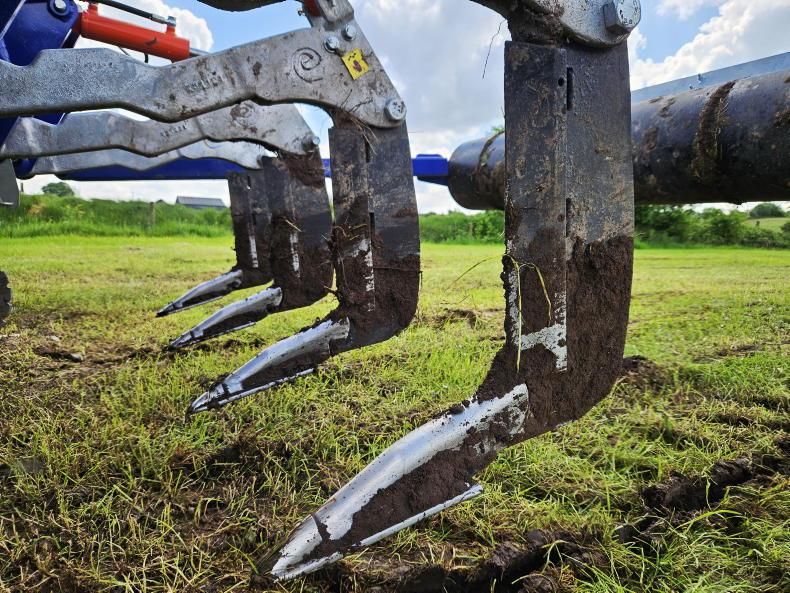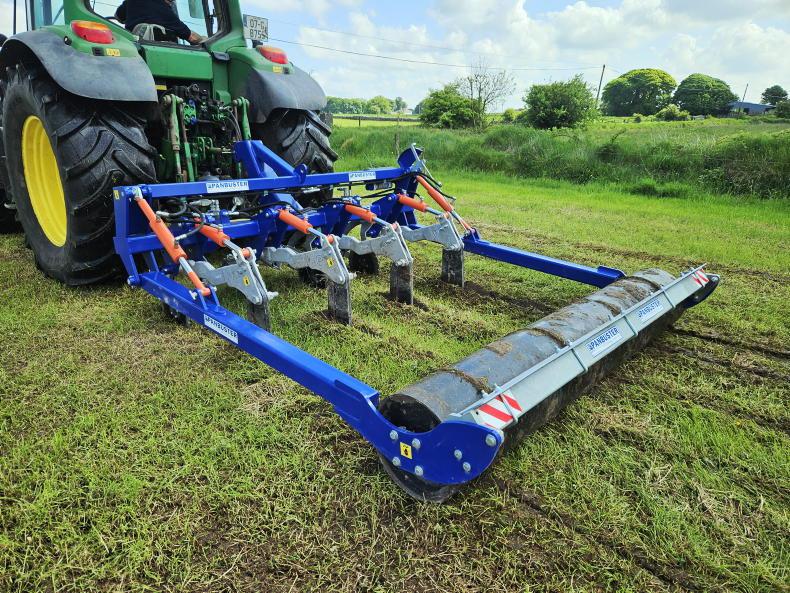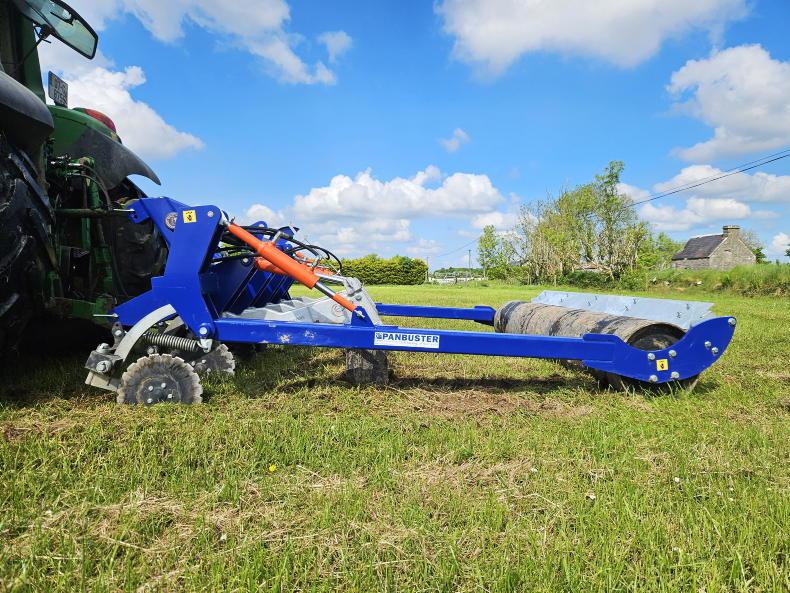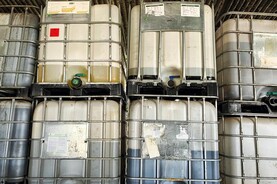Soil is the most important asset in grassland and tillage farming. Farmers trying to stretch the grazing season, in combination with heavy machinery working on land, can unintentionally cause soil compression, or compaction. I remember reading some research which described a soil’s structure as the “architecture of the soil”. In a similar fashion where the architecture of a building determines how it will function, the architecture of the soil determines how the soil functions. Essentially, the arrangement of the aggregates and pores in the soil control the movement of water and air in it, which also impacts soil temperatures.
Fundamentally, soil moisture, air and temperature affect the life within the soil, which includes plant roots, worms and microorganisms. At the end of the day, the soil structure impacts crop yields, fertiliser use efficiency and pollution, while a damaged soil structure comes at a cost, in terms of production, economics and the environment.
Mechanical intervention
As with any issue in farming, its prevention is always better than trying to find a cure. However, as I was once told, every decision in farming is the lesser of two evils, and difficult weather conditions and a whole host of factors can have a major impact on our good intentions. When you read the Teagasc research, it notes that where a soil’s structure is badly damaged and natural recovery is not possible, mechanical intervention may be necessary. Teagasc says that where severe structural damage has occurred below a ploughing depth (>25cm), subsoiling may be appropriate. However, the research body advises caution around smearing the soil at depth, which can create a more serious problem than before. It notes that subsoil loosening should take place just below the compacted layer and can alleviate problems to 45cm depth, though research has shown mixed results. Careful soil management is also required following subsoiling, to avoid re-compaction.

The machine is lifted out of the ground at the end of the run using the roller, with the roller then rolls the exits, leaving a nice tidy finish.
The Erth panbuster
Erth built its first Panbuster subsoiler back in 2003, initially designed for the tillage market. In 2006, it saw an opening for a grassland version. Today, Erth offers three models – the Shearbolt, Compact/ECO and the Panbuster X, with the latter being its most popular. The firm offers three, four and five-leg variations within each, with leg spacings ranging from 600mm up to 900mm. The unit can be specified with working widths from 2.4m up to 3m, while transport width varies from 2.35m up to 3m.

Erth says its new leg has a low power demand, commonly working at 300mm, it says it only needs 25hp per leg.
How does it work?
With 20 years’ experience in the business, Erth says that every soil has different characteristics and behaves differently, with varying moisture. The manufacturer says it likes to have some moisture in the soil when panbusting. It says the moisture allows the soil to flex, with the wave action generated by panbusting levering open cracks in the top zone. At the front of the machine, in front of each leg, is a spring-loaded disc. These discs cut a slot in the ground, which paves a path for the leg. All machines come as standard with a hydraulically-controlled rear roller, which also acts as hydraulic depth control feature. This allows the working depth to be changed, on the go, to suit the conditions at hand. A depth control indicator allows the operator to see from the cab, what depth the machine is working at. The machine is lifted out of the ground at the end of the run using the roller, which then rolls the exits, leaving a nice, clean, tidy finish.

Erth’s latest leg design incorporates a reversible wear shin, which hooks onto the leg and is held on by just one roll pin.
New leg
Twenty years in refinement, Erth said it has recently designed a leg-specific for grassland. It says it’s not an arable leg slimmed down, or a smaller foot, but that it reduces the draft requirement and maximises lift. It notes that by placing the legs in a line, the lift is maximised and can be controlled more by adjusting the toplink.
As the metal point wears, Erth says that the lift and penetration can be helped by shortening the toplink, meaning as the metal wears, the machine will continue to carry out the same standard of work. Erth explained that when designing a low disturbance leg, you compromise on pitch – too much and you may create additional disturbance, whereas too little pitch you may have poor penetration, especially as the points wear.
It claims that the optimum design is a leg that operators could alter the pitch to suit conditions, which it claims its new leg can do, thanks to the patent pending slot/cam fixture built into the leg which allows for easy adjustment. Erth’s design incorporates a reversible wear shin, which hooks on to the leg. It sits into place and is held on by just one roll pin. The shin features a sharp profile top and bottom, to provide less disturbance and drag. Erth says its new leg has a low power demand, commonly working at 300mm, it says it only needs 25hp/leg. The leg design appeared to be very effective, but it was the wearing part system which really impressed us. The hook and pin shin are reversible and is held on with just one roll pin, which makes it very quick and simple to change.

The disc’s cut a slot in the ground, which paves a path for the leg.
Auto reset system
From using the Panbuster, it has a simple and effective auto-reset system. Its hydraulic system incorporates an accumulator with a secondary bladder accumulator for a fully enclosed auto-reset system. Erth’s hydraulic reset allows break-back pressure to be varied to suit the conditions at hand. This is straightforward, and the pressure is set hydraulically by pressurising the accumulator. The legs also have the ability to swing sideways, which helps reduce stress on the machine and to prevent bringing up stones. Erth claims it has up to 150mm of sideways movement.

A depth control indicator allows the operator to see from the cab, what depth the machine is working at.
Verdict
Last year, we panbusted about 15-20 acres in our trial. Immediately afterwards, the ground was notably softer and was left idle for a few weeks to resettle itself. This spring, the ground was in superb order – whether that was the good weather, the Panbuster, or a combination of both, time will tell. In terms of its functionality, once the hydraulic pressures were set, the machine carried out seriously impressive, tidy work. Like a plough, it is ground dependant and difficult to say how long one would get out of the wearing metal. The auto reset function worked perfectly, and was easy to adjust by further charging or releasing some hydraulic pressure. The depth control through the rear roller was very simple. Mechanically, the machine is well designed and its build quality is impressive, which coupled with an excellent paint finish. Output is slow, but that goes hand-in-hand with the job. Forward speed varied depending on the ground, but fluctuated around 3-7km/h. Throughput also varied, but was probably close to 1-2.5ac/hour. The only minor alteration I might make is changing the numbers on the depth control indicator to inches, rather than the pre-existing one to eight numbering, so that the operator can see from the cab how deep he/she is working the machine to.

Mechanically, the machine is well designed and its build quality is impressive, which coupled with an excellent paint finish.
Farmer comment:
Jerome Dee, Listowel, Co Kerry
Located 8km from Listowel, Jerome Dee milks 80-90 cows: “We’re farming some of the wettest land in north Kerry. When the Erth Panbuster came out 20 years ago, we hired one from a company in Northern Ireland. It was a great machine and did serious work on the land, but we didn’t understand how to operate it well enough. In 2008, we made the decision to buy a new machine for ourselves. The earlier machines were effective, but a combination of operator error and maybe a design that wasn’t as good as the current day machines, meant they pulled up a lot of stones. Last year, we purchased a new machine and it is unbelievable. When set up right, the machine will bring up very few stones, and the results speak for themselves.
“Last September, I panbusted around 60 acres of the milking block. I have a serious return in grass this spring, and the cows are out earlier. Over the last 20 years of use on our farm, I reckon the sweet spot on our type of land is to panbust it every three years. On average, we are getting the cows out to grass three weeks earlier in the springs and keeping them out later in the autumns. I did around 40 acres for two other friends, alongside my own 60 acres last year. There is still plenty of life left in the shins and tips, and I reckon the wearable metal will last for 200 acres in total in our type of heavy, peaty land. We have a pan on some ground at around 12 inches deep, so I generally work to 16 inches. The Erth Panbuster is one of the best machines in our yard, and I reckon every farmer should have one,” said Jerome.

Erth Engineering largely specialises in the design and manufacture of two products – the Panbuster subsoiler and the Agriseeder direct drill.
Erth Engineering
Based in Seaford, Co Down, Erth Engineering has been in business for over 25 years. The firm was established by current managing director David McCoubrey. Today, Erth Engineering largely specialises in the design and manufacture of two products – the Panbuster subsoiler and the Agriseeder direct drill.
Likes
Extremely neat finish in the field.
Effective auto reset.
Simple depth control.
Ease of changing wearing parts on the legs.
Dislikes
Numbers on the depth control indicator list one to eight, but would prefer this in inches, so the operator can see from the cab how deep they are working the machine.

Erth built its first Panbuster in 2003, initially designed for the tillage market, while in 2006, it added a grassland version.
Spec
Model: Panbuster X.Legs: four.Leg spacing: 600mm.Working width: 2.4m (3m pass to pass).Transport width: 2.6m.Weight: 1,250kg.Price: €14,250 plus VAT.
Soil is the most important asset in grassland and tillage farming. Farmers trying to stretch the grazing season, in combination with heavy machinery working on land, can unintentionally cause soil compression, or compaction. I remember reading some research which described a soil’s structure as the “architecture of the soil”. In a similar fashion where the architecture of a building determines how it will function, the architecture of the soil determines how the soil functions. Essentially, the arrangement of the aggregates and pores in the soil control the movement of water and air in it, which also impacts soil temperatures.
Fundamentally, soil moisture, air and temperature affect the life within the soil, which includes plant roots, worms and microorganisms. At the end of the day, the soil structure impacts crop yields, fertiliser use efficiency and pollution, while a damaged soil structure comes at a cost, in terms of production, economics and the environment.
Mechanical intervention
As with any issue in farming, its prevention is always better than trying to find a cure. However, as I was once told, every decision in farming is the lesser of two evils, and difficult weather conditions and a whole host of factors can have a major impact on our good intentions. When you read the Teagasc research, it notes that where a soil’s structure is badly damaged and natural recovery is not possible, mechanical intervention may be necessary. Teagasc says that where severe structural damage has occurred below a ploughing depth (>25cm), subsoiling may be appropriate. However, the research body advises caution around smearing the soil at depth, which can create a more serious problem than before. It notes that subsoil loosening should take place just below the compacted layer and can alleviate problems to 45cm depth, though research has shown mixed results. Careful soil management is also required following subsoiling, to avoid re-compaction.

The machine is lifted out of the ground at the end of the run using the roller, with the roller then rolls the exits, leaving a nice tidy finish.
The Erth panbuster
Erth built its first Panbuster subsoiler back in 2003, initially designed for the tillage market. In 2006, it saw an opening for a grassland version. Today, Erth offers three models – the Shearbolt, Compact/ECO and the Panbuster X, with the latter being its most popular. The firm offers three, four and five-leg variations within each, with leg spacings ranging from 600mm up to 900mm. The unit can be specified with working widths from 2.4m up to 3m, while transport width varies from 2.35m up to 3m.

Erth says its new leg has a low power demand, commonly working at 300mm, it says it only needs 25hp per leg.
How does it work?
With 20 years’ experience in the business, Erth says that every soil has different characteristics and behaves differently, with varying moisture. The manufacturer says it likes to have some moisture in the soil when panbusting. It says the moisture allows the soil to flex, with the wave action generated by panbusting levering open cracks in the top zone. At the front of the machine, in front of each leg, is a spring-loaded disc. These discs cut a slot in the ground, which paves a path for the leg. All machines come as standard with a hydraulically-controlled rear roller, which also acts as hydraulic depth control feature. This allows the working depth to be changed, on the go, to suit the conditions at hand. A depth control indicator allows the operator to see from the cab, what depth the machine is working at. The machine is lifted out of the ground at the end of the run using the roller, which then rolls the exits, leaving a nice, clean, tidy finish.

Erth’s latest leg design incorporates a reversible wear shin, which hooks onto the leg and is held on by just one roll pin.
New leg
Twenty years in refinement, Erth said it has recently designed a leg-specific for grassland. It says it’s not an arable leg slimmed down, or a smaller foot, but that it reduces the draft requirement and maximises lift. It notes that by placing the legs in a line, the lift is maximised and can be controlled more by adjusting the toplink.
As the metal point wears, Erth says that the lift and penetration can be helped by shortening the toplink, meaning as the metal wears, the machine will continue to carry out the same standard of work. Erth explained that when designing a low disturbance leg, you compromise on pitch – too much and you may create additional disturbance, whereas too little pitch you may have poor penetration, especially as the points wear.
It claims that the optimum design is a leg that operators could alter the pitch to suit conditions, which it claims its new leg can do, thanks to the patent pending slot/cam fixture built into the leg which allows for easy adjustment. Erth’s design incorporates a reversible wear shin, which hooks on to the leg. It sits into place and is held on by just one roll pin. The shin features a sharp profile top and bottom, to provide less disturbance and drag. Erth says its new leg has a low power demand, commonly working at 300mm, it says it only needs 25hp/leg. The leg design appeared to be very effective, but it was the wearing part system which really impressed us. The hook and pin shin are reversible and is held on with just one roll pin, which makes it very quick and simple to change.

The disc’s cut a slot in the ground, which paves a path for the leg.
Auto reset system
From using the Panbuster, it has a simple and effective auto-reset system. Its hydraulic system incorporates an accumulator with a secondary bladder accumulator for a fully enclosed auto-reset system. Erth’s hydraulic reset allows break-back pressure to be varied to suit the conditions at hand. This is straightforward, and the pressure is set hydraulically by pressurising the accumulator. The legs also have the ability to swing sideways, which helps reduce stress on the machine and to prevent bringing up stones. Erth claims it has up to 150mm of sideways movement.

A depth control indicator allows the operator to see from the cab, what depth the machine is working at.
Verdict
Last year, we panbusted about 15-20 acres in our trial. Immediately afterwards, the ground was notably softer and was left idle for a few weeks to resettle itself. This spring, the ground was in superb order – whether that was the good weather, the Panbuster, or a combination of both, time will tell. In terms of its functionality, once the hydraulic pressures were set, the machine carried out seriously impressive, tidy work. Like a plough, it is ground dependant and difficult to say how long one would get out of the wearing metal. The auto reset function worked perfectly, and was easy to adjust by further charging or releasing some hydraulic pressure. The depth control through the rear roller was very simple. Mechanically, the machine is well designed and its build quality is impressive, which coupled with an excellent paint finish. Output is slow, but that goes hand-in-hand with the job. Forward speed varied depending on the ground, but fluctuated around 3-7km/h. Throughput also varied, but was probably close to 1-2.5ac/hour. The only minor alteration I might make is changing the numbers on the depth control indicator to inches, rather than the pre-existing one to eight numbering, so that the operator can see from the cab how deep he/she is working the machine to.

Mechanically, the machine is well designed and its build quality is impressive, which coupled with an excellent paint finish.
Farmer comment:
Jerome Dee, Listowel, Co Kerry
Located 8km from Listowel, Jerome Dee milks 80-90 cows: “We’re farming some of the wettest land in north Kerry. When the Erth Panbuster came out 20 years ago, we hired one from a company in Northern Ireland. It was a great machine and did serious work on the land, but we didn’t understand how to operate it well enough. In 2008, we made the decision to buy a new machine for ourselves. The earlier machines were effective, but a combination of operator error and maybe a design that wasn’t as good as the current day machines, meant they pulled up a lot of stones. Last year, we purchased a new machine and it is unbelievable. When set up right, the machine will bring up very few stones, and the results speak for themselves.
“Last September, I panbusted around 60 acres of the milking block. I have a serious return in grass this spring, and the cows are out earlier. Over the last 20 years of use on our farm, I reckon the sweet spot on our type of land is to panbust it every three years. On average, we are getting the cows out to grass three weeks earlier in the springs and keeping them out later in the autumns. I did around 40 acres for two other friends, alongside my own 60 acres last year. There is still plenty of life left in the shins and tips, and I reckon the wearable metal will last for 200 acres in total in our type of heavy, peaty land. We have a pan on some ground at around 12 inches deep, so I generally work to 16 inches. The Erth Panbuster is one of the best machines in our yard, and I reckon every farmer should have one,” said Jerome.

Erth Engineering largely specialises in the design and manufacture of two products – the Panbuster subsoiler and the Agriseeder direct drill.
Erth Engineering
Based in Seaford, Co Down, Erth Engineering has been in business for over 25 years. The firm was established by current managing director David McCoubrey. Today, Erth Engineering largely specialises in the design and manufacture of two products – the Panbuster subsoiler and the Agriseeder direct drill.
Likes
Extremely neat finish in the field.
Effective auto reset.
Simple depth control.
Ease of changing wearing parts on the legs.
Dislikes
Numbers on the depth control indicator list one to eight, but would prefer this in inches, so the operator can see from the cab how deep they are working the machine.

Erth built its first Panbuster in 2003, initially designed for the tillage market, while in 2006, it added a grassland version.
Spec
Model: Panbuster X.Legs: four.Leg spacing: 600mm.Working width: 2.4m (3m pass to pass).Transport width: 2.6m.Weight: 1,250kg.Price: €14,250 plus VAT.














 This is a subscriber-only article
This is a subscriber-only article










SHARING OPTIONS: